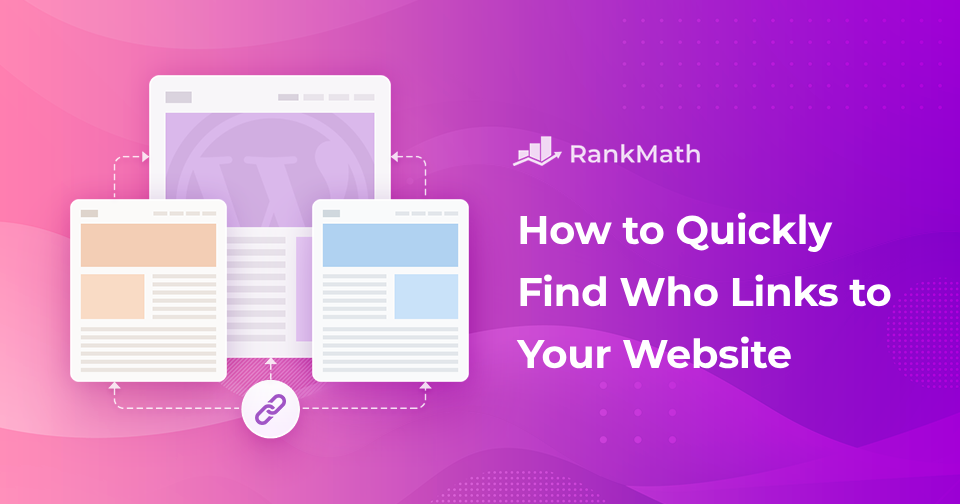Have you ever wondered who’s talking about your website?
Discovering who links to your website can provide valuable insights into your online presence and help you understand the impact of your content.
But here’s the million-dollar question: how do you uncover these invisible threads connecting your website to the broader web?
In this post, we’ll discuss effective strategies and tools for identifying the sources linking to your website. By understanding who links to your website, you can make informed decisions to improve your website’s visibility and authority.
So, without any further ado, let’s get started.
Table Of Contents
1 Why is It Important to Find Out Who Links to Your Website?
Understanding who links to your website is important for several reasons.
Google and other search engines use backlinks to determine how trustworthy and important your website is. The more quality websites that link to yours, the better you will likely rank in search results.

Knowing who’s linking to your competitors can give you ideas for your own website. If another website in your field is getting a lot of attention from good sources, you might want to figure out how to get noticed by those same places.
Sometimes, other websites send visitors to your site through their links. By finding out who’s sending you traffic, you can see which partnerships or collaborations are paying off and focus on them.
Not all links are good ones.
Some websites might link to yours in a way that hurts your reputation. For example, if a shady or spammy site links to you, it can make search engines think your site is also shady. By knowing who links to your website, you can spot these bad links and reach out to the site owner who links you and ask them to remove such links.
2 Finding Links to Your Website
Let us now discuss how to find out who links to your website.
2.1 Using Google Search Console
Using Google Search Console to find out who links to your website is simple.
Navigate to the Google Search Console website and sign in with your Google account. If you haven’t already, you’ll need to add and verify your website.
Refer to our dedicated tutorial to connect your Google account with Rank Math.
Once logged in, select the property (website) for which you want to view your link data. If you have multiple properties added to Google Search Console, ensure you choose the correct one.
Now, in the left-hand menu, navigate to the Links → External Links section.
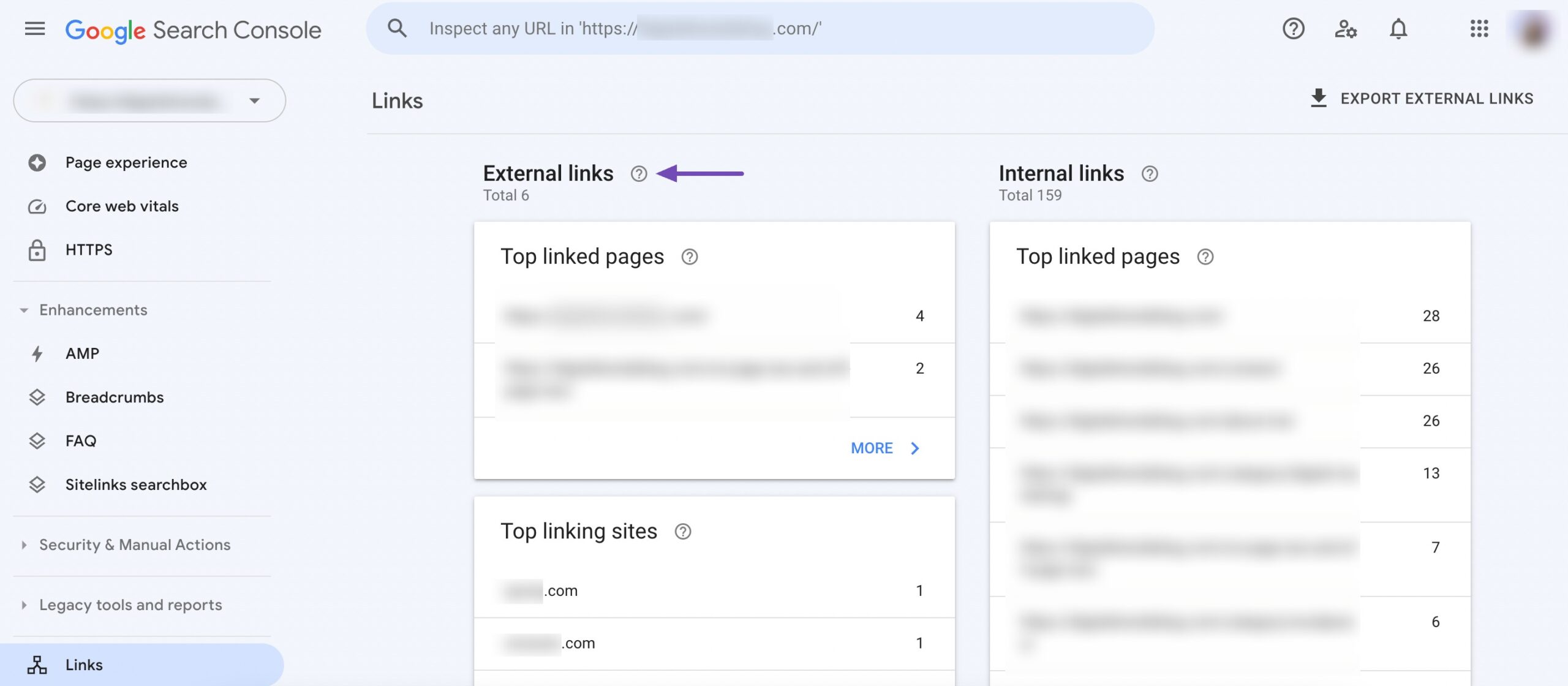
This will take you to the Links report, where you can view information about the top target pages and the total number of external websites linking to your site.
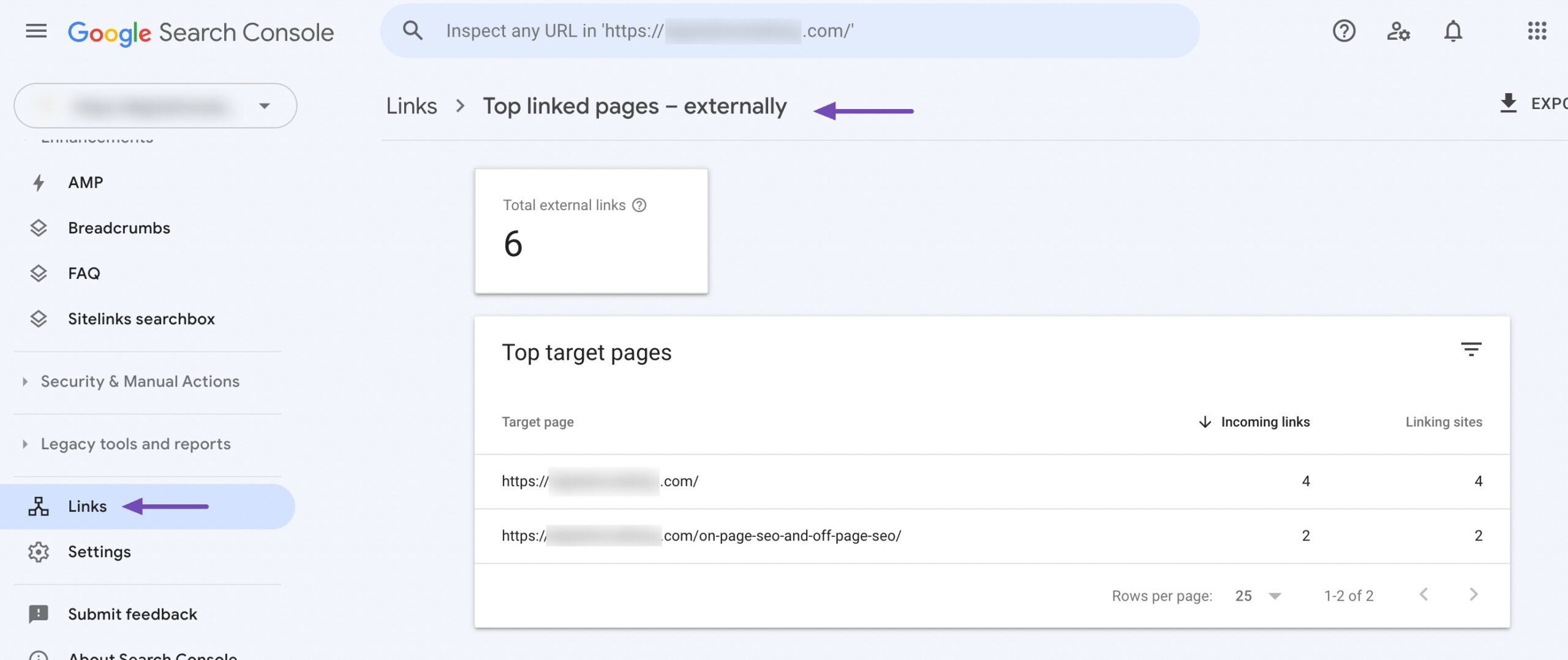
Google Search Console allows you to filter the data by various criteria, such as date, linking domain, and anchor text. You can also export the data for further analysis or reporting purposes.
Click on any of the target pages to find the referring domains that link to the target page.
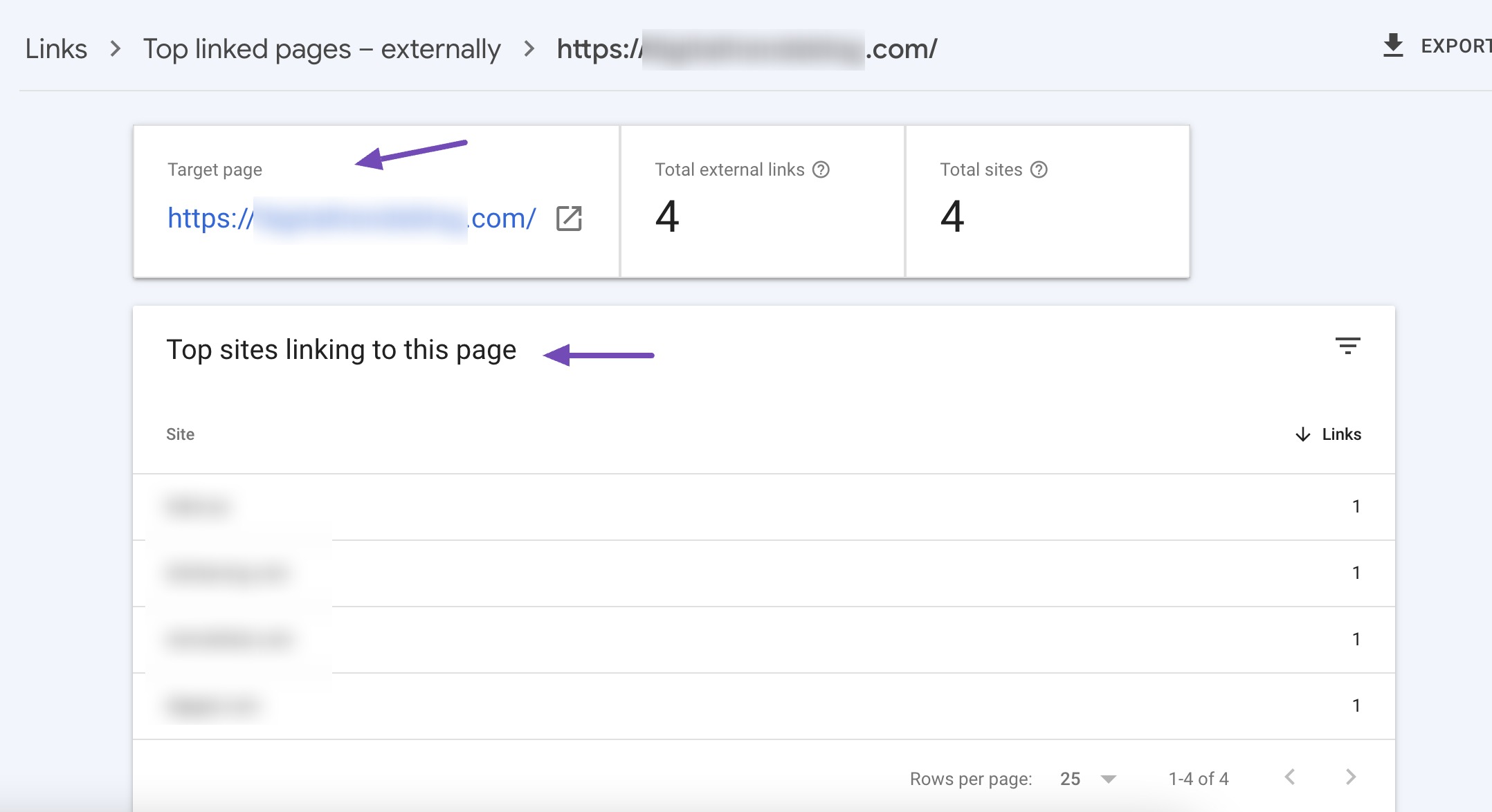
Once you’ve gathered the data, you can download it and take the time to analyze the data.
Look for patterns, identify opportunities for improvement, and address any issues, such as spammy or low-quality backlinks.
2.2 Using Third-Party Tools
You can also use third-party tools to find out who links to your website. Doing so can provide valuable insights into your website’s link profile and help you make informed decisions to improve your SEO strategy.
Some of the most popular third-party tools for backlink analysis include Ahrefs, Semrush, Ubersuggest, etc.
In the Ahrefs Site Explorer, enter your website URL, and you’ll be directed to your site’s Overview page.
Here, you’ll see various metrics and data about your website’s backlink profile.

To view the specific backlinks pointing to your site, navigate to the Backlinks section.
In the Backlinks report, you’ll see a list of backlinks pointing to your website. You can see information such as the referring page, the linking domain’s domain rating, etc.
You can filter backlinks by type (dofollow, nofollow), language, etc. You can also sort backlinks by domain rating, traffic, and other metrics.
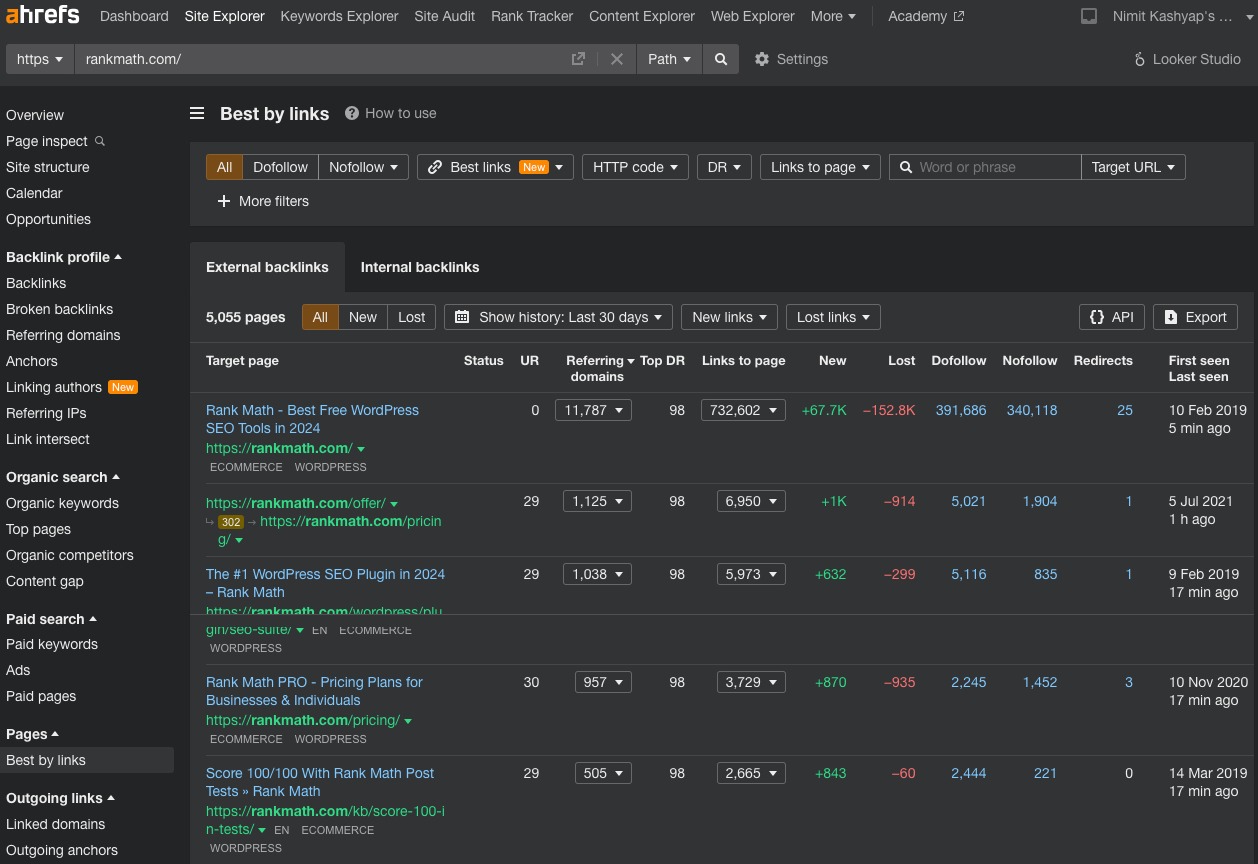
Aside from the Backlinks report, you can use the Referring domains report to see the unique domains linking to your site.
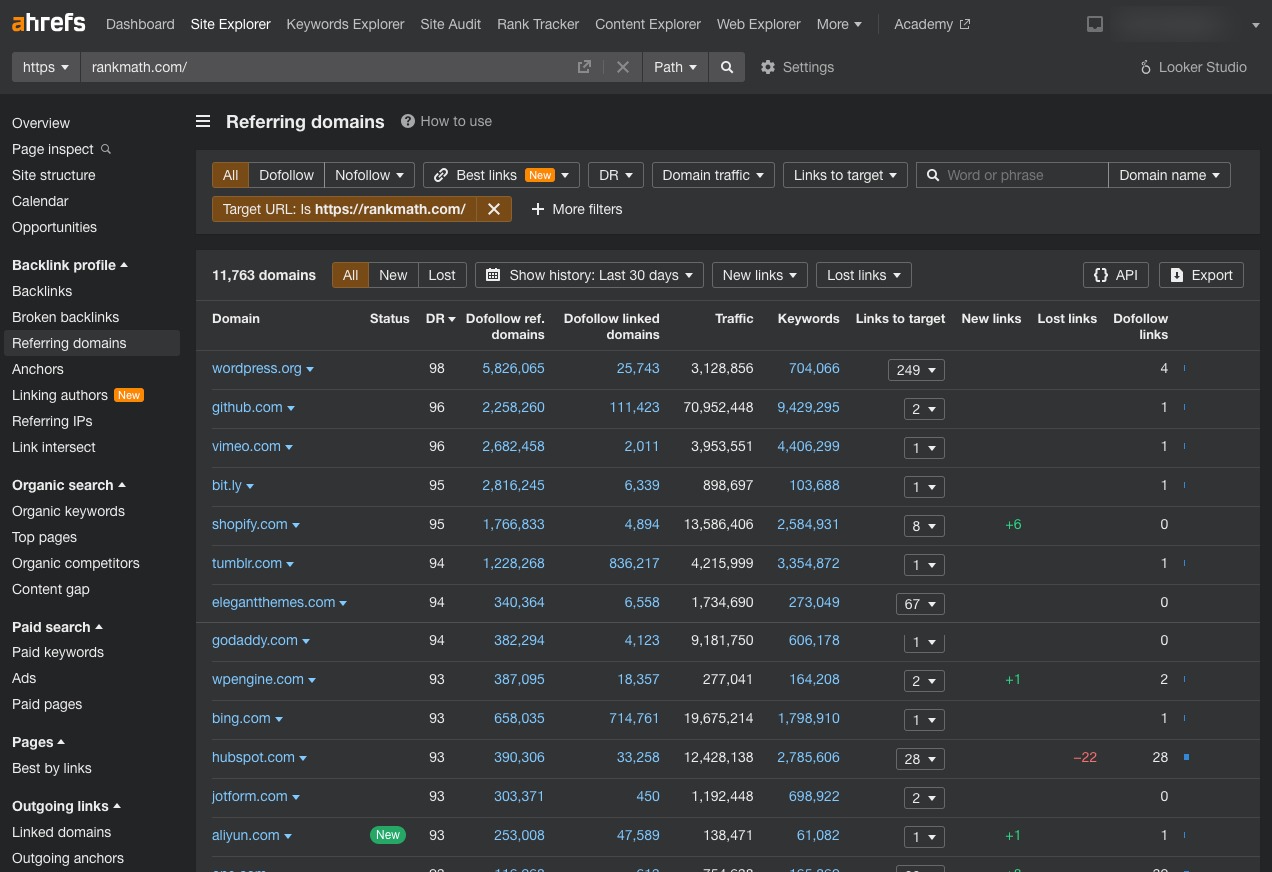
You can export the backlink data from Ahrefs to a CSV file for further analysis or reporting.
Once you have your link data, perform competitor backlinks analysis to gain valuable insights into your competitors’ link-building strategies and help you identify opportunities to improve your own website’s backlink profile.
3 Monitor and Review Your Backlinks
Once you’ve figured out who links to your website, it’s essential to regularly review and update your backlink data to maintain an accurate understanding of your website’s link profile.
Schedule periodic audits to identify new backlinks, assess their quality, and track changes over time.
Monitor your backlink profile to identify and address the negative backlinks. Negative backlinks, such as those from spammy or low-quality websites, can harm your website’s SEO performance.
By regularly monitoring and addressing negative backlinks, you can identify different trends, address issues, and optimize your link-building strategy for better SEO performance.
4 Conclusion
Learning how to find who links to your website quickly is easy. Right?
By using tools like Google Search Console and third-party platforms such as Ahrefs or Semrush, you can uncover valuable insights about your website’s online connections.
Remember, keeping an eye on your backlinks is not just about numbers—it’s about understanding your website’s reputation, improving your search engine ranking, and staying ahead of the competition.
So, keep exploring, keep learning, and keep optimizing your website’s backlink strategy. With a little effort and the right tools, you’ll be well on your way to making your mark in the vast world of the internet.
If you like this post, let us know by Tweeting @rankmathseo.
